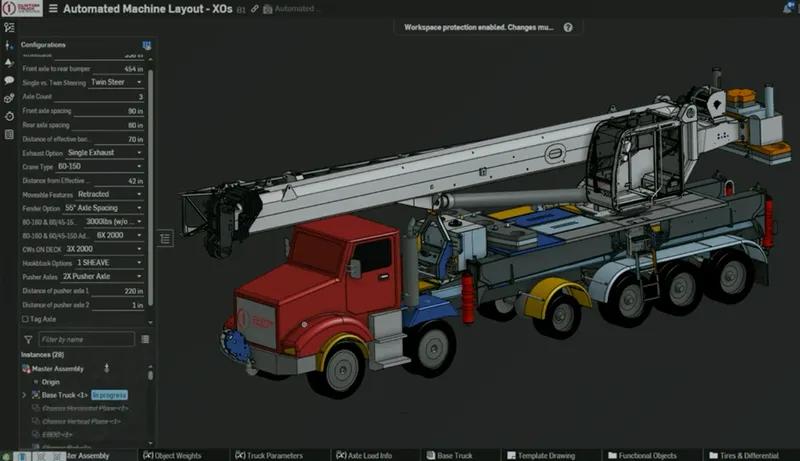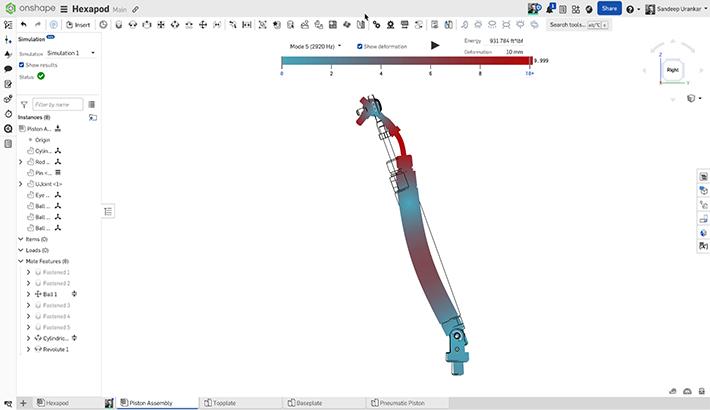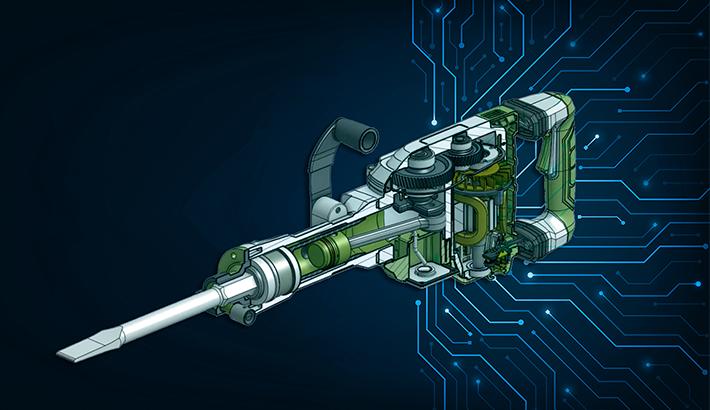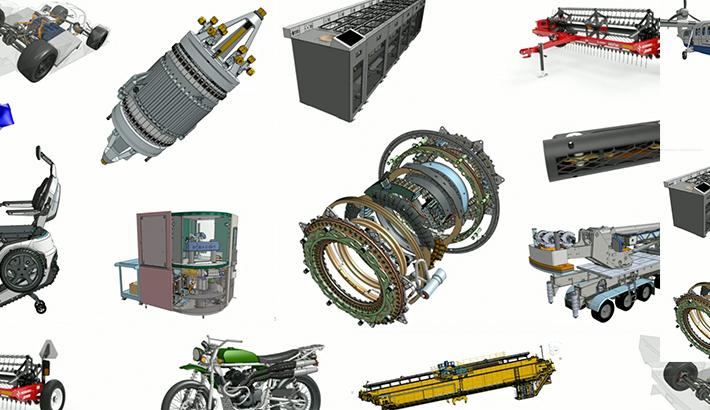
06:59
TL;DR: Custom Truck One Source’s VP of Engineering led his 40-plus person team through a strategic migration from desktop CAD to Onshape, PTC’s cloud-native CAD and PDM platform, eliminating wasted design loading times and enabling real-time product configuration. Onshape’s faster performance is expected to reduce basic CAD operations by at least 15%, bolstering productivity, while significantly reducing downtime with an estimated cost savings of approximately $500,000. The key: Treating a CAD transition as a marathon with comprehensive communication and in-house implementation to maximize team learning.
45 minutes. That’s how long Kyle Gerber’s engineering team waited just to open a large CAD assembly.
As VP of Engineering overseeing 40-plus engineers at a $2 billion company, Gerber had two choices: Accept declining engineering productivity as designs increase in complexity or evaluate modern technical solutions to old problems.
Performance Problems Signal CAD Platform Limitations

Custom Truck One Source, a Kansas City-based construction equipment manufacturer and rental company, saw their journey from upfitter to $2 billion public company create an unexpected problem. The CAD workflows that once supported their growth now limited productivity. Complex crane assemblies with thousands of parts overwhelmed their desktop CAD system, forcing engineers to build simplified Excel calculators just to quote customers.
“The efficiency of our engineers was just becoming very, very low. … It was just so intensive on our PCs that we simply couldn’t do it,” Gerber explained during a recent webinar alongside Engineering Systems Manager Chris Beougher.
CASE STUDY: Custom Truck One Source Races Towards Vertical Integration
But here’s what made Gerber’s approach effective: Like many engineering leaders, he was searching for a proven solution, but he recognized this wasn’t just about CAD features or software preferences. He found what he needed by looking beyond the established file-based CAD vendors to strategic platform decisions that would compound over years.
“At the end of the day, it was less about CAD-to-CAD, feature-to-feature comparison, and more about data [and] release management, some of the foundations on which the CAD system is built,” he said.
Evaluate Platforms Based on Future Needs, Not Current Features
A successful CAD platform transition strategy starts with honest assessment of where your current tools are heading, not just where they are today. Gerber wasn’t anti-SOLIDWORKS – his team had thousands of hours invested in the platform. He’d even founded a user group in Atlanta years earlier.
However, market signals were clear. Vendor direction pointed toward a hybrid platform that still had all the problems of file-based CAD. With no significant improvements in his team’s productivity in sight, he still had to deal with extended maintenance contracts and price increases.
The breakthrough came when Gerber shifted focus from defending existing investments to reevaluating current and future needs. What if his team could configure infinite product variations in real-time? What if weight calculations happened automatically within the design model instead of disconnected Excel sheets? What if sales teams could collaborate directly with engineering data instead of waiting weeks for layout drawings?
These weren’t pie-in-the-sky wishes. They were cloud CAD benefits that became accessible once Gerber committed to platform-level change. The cloud infrastructure powering modern CAD platforms provides the computational resources and reliability that desktop systems simply can’t match. Running on enterprise-grade cloud infrastructure like AWS, these platforms deliver 99.95% availability while handling complex assemblies that would overwhelm local workstations.
The IT team’s enthusiastic response validated this approach. While executives had initial security concerns, IT immediately embraced the AWS-hosted cloud transition, recognizing the superior security and reduced infrastructure burden compa red to on-premises systems.
Treat Transition as Training, Not Disruption
Perhaps the most overlooked aspect of any CAD migration strategy is the people challenge. Engineers develop connections to their tools, and asking them to abandon familiar workflows can feel like professional betrayal.
“I have found that maybe the more difficult portion of the transition was the personnel side because engineers love their CAD systems,” Gerber acknowledged. “You have to recognize that and understand where people are coming from when they have their resistance to change.”
His solution involved treating the migration as a marathon, not a sprint, while using the transition itself as a training accelerator. Instead of outsourcing data conversion to consultants, Custom Truck kept the work in-house. This approach served dual purposes: Engineers learned the new platform through hands-on practice, and the team discovered design issues that had been hiding in their legacy models for years.
“You lose some of the training opportunity for people to get used to the platform,” Gerber noted about outsourced migrations. “I can’t count how many things we started remodeling and got in there and started assembling – it’s like, wait a second, how have we been building this for five years? That interferes there.”
Real-Time Configuration Eliminates Engineering Bottlenecks
The transformation results speak for themselves. What once required separate Excel calculators, 2D AutoCAD layouts, and weeks of engineering iteration now happens in real-time within the design environment. Custom Truck’s sales teams can now configure complex crane assemblies, automatically calculate axle loads, and visualize exactly what customers will receive – all while sitting across the table during initial meetings.
“We have an engineer that all he does is basically just scale tickets and layout drawings for sales,” Gerber explained. “If we can take this model and give it into the hands of our sales team and they can sit with the customer and run through this and do four or five iterations, then that is the work of at least one engineer.”
The cloud CAD benefits extended beyond productivity gains. Real-time collaboration replaced file-passing workflows, integrated calculations eliminated disconnected spreadsheets, and visual validation caught interference issues before they reached production.
Perhaps most importantly, the platform delivered something traditional desktop CAD couldn’t: The ability to extend complex assemblies dynamically.
“Being able to do that in any other CAD system, I’ve never seen that possible,” Gerber said.
Five Essential Steps for CAD Platform Transition
Custom Truck’s CAD migration strategy followed several crit ical phases that other engineering leaders can adapt:
Step 1: Communicate across all departments
Include shop floor, procurement, supply chain, and quality teams from the start.
Step 2: Keep conversion in-house
Use migration as a training opportunity rather than outsourcing to consultants.
Step 3: Remodel strategically
Rebuild frequently changed products to leverage new platform capabilities instead of importing old geometry.
Step 4: Set marathon expectations
Plan for 12-plus months depending on organization size, with consistent daily progress.
Step 5: Start immediately
Begin with small steps rather than waiting for perfect timing.
“This is a marathon, not a sprint,” Gerber noted. “You’re not going to be able to do your implementation in 30 days or 60 days or maybe even 12 months depending on the size of your organization. But you have to get started, and if you do a little bit of work each and every day, then you’re going to look back in a month or six months, and you’re going to say, wow, we did a lot of work here.”
Act Before Crisis Forces Your Hand
Gerber’s experience offers a roadmap for other midmarket engineering leaders considering platform changes. The key insight? Don’t wait for crisis to force your hand. Proactive transformation beats reactive scrambling every time.
Successful CAD migration strategy requires three elements: Honest assessment of current limitations, clear vision of future capabilities, and patient execution that treats change as opportunity rather than disruption.
The question isn’t whether your current tools work today. It’s whether they’ll support where your business needs to go tomorrow.
The Onshape Discovery Program
Learn how qualified CAD professionals can get Onshape Professional for up to 6 months – at no cost!
Latest Content

- Case Study
- Industrial Equipment & Machine Design
Reframe Systems: Transforming Homebuilding with Digital Automation and Cloud-Native Onshape
09.25.2025 learn more
- Blog
- Becoming an Expert
- Assemblies
- Simulation
Mastering Kinematics: A Deeper Dive into Onshape Assemblies, Mates, and Simulation
12.11.2025 learn more
- Blog
- Evaluating Onshape
- Learning Center
AI in CAD: How Onshape Makes Intelligence Part of Your Daily Workflow
12.10.2025 learn more
- Blog
- Evaluating Onshape
- Assemblies
- Drawings
- Features
- Parts
- Sketches
- Branching & Merging
- Release Management
- Documents
- Collaboration
Onshape Explained: 17 Features That Define Cloud-Native CAD
12.05.2025 learn more



